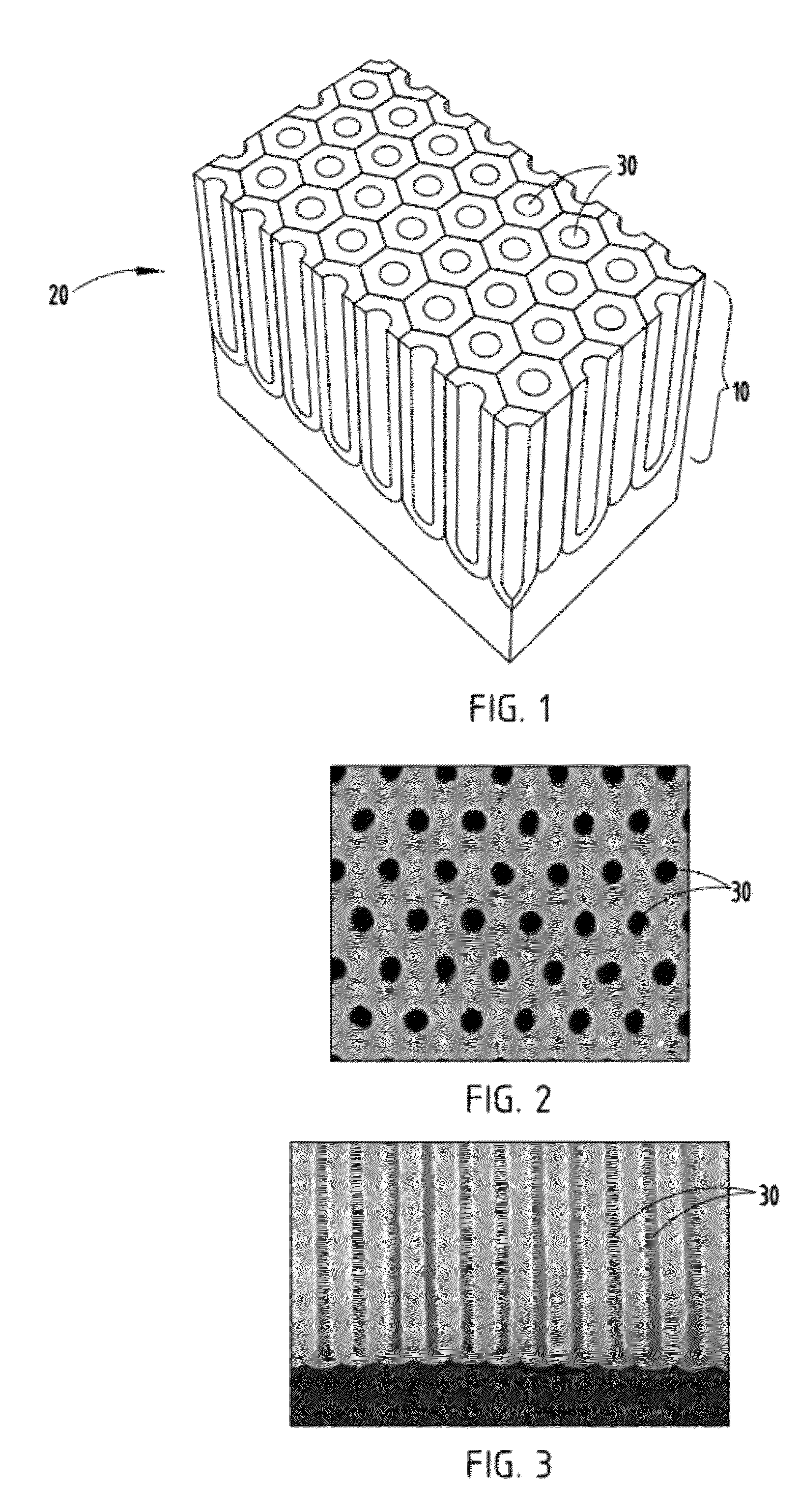Process for the manufacture of sealed anodized aluminum components
an anodized aluminum and aluminum alloy technology, applied in the field of sealing anodized aluminum and aluminum alloy components, can solve the problems of inefficient time and energy, high cost, and time-consuming sealing steps, and achieve the effects of less equipment, less time, and less energy
- Summary
- Abstract
- Description
- Claims
- Application Information
AI Technical Summary
Benefits of technology
Problems solved by technology
Method used
Image
Examples
Embodiment Construction
[0013]A process in accordance with certain embodiments of the invention involves providing an article comprised of aluminum or an aluminum alloy that has been anodized (i.e., subjected to a conventional electrolytic passivation process) to augment a natural oxide layer (i.e., increase the thickness) at a surface of the article; treating the oxide layer with a first solution (Step 1) that contains an anion capable of reacting with a cation to form a water-insoluble precipitate; and contacting the treated oxide layer with a second solution (Step 2) containing a cation capable of combining with the anion to form a water-insoluble precipitate. Step 1 “chemically charges” the anodic pores; this material then reacts with Step 2 chemicals to seal the anodic pores. Prior to treatment with the first and second solutions, the anodized article may optionally be treated with a dye to impart color to a surface of the article. The article may be treated in other ways, such as electrolytic colorin...
PUM
| Property | Measurement | Unit |
|---|---|---|
| time | aaaaa | aaaaa |
| concentration | aaaaa | aaaaa |
| concentration | aaaaa | aaaaa |
Abstract
Description
Claims
Application Information
 Login to view more
Login to view more - R&D Engineer
- R&D Manager
- IP Professional
- Industry Leading Data Capabilities
- Powerful AI technology
- Patent DNA Extraction
Browse by: Latest US Patents, China's latest patents, Technical Efficacy Thesaurus, Application Domain, Technology Topic.
© 2024 PatSnap. All rights reserved.Legal|Privacy policy|Modern Slavery Act Transparency Statement|Sitemap

